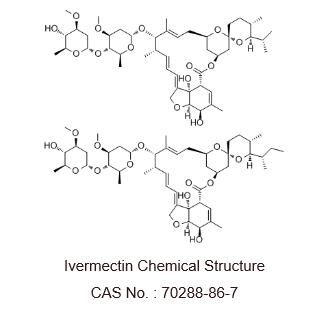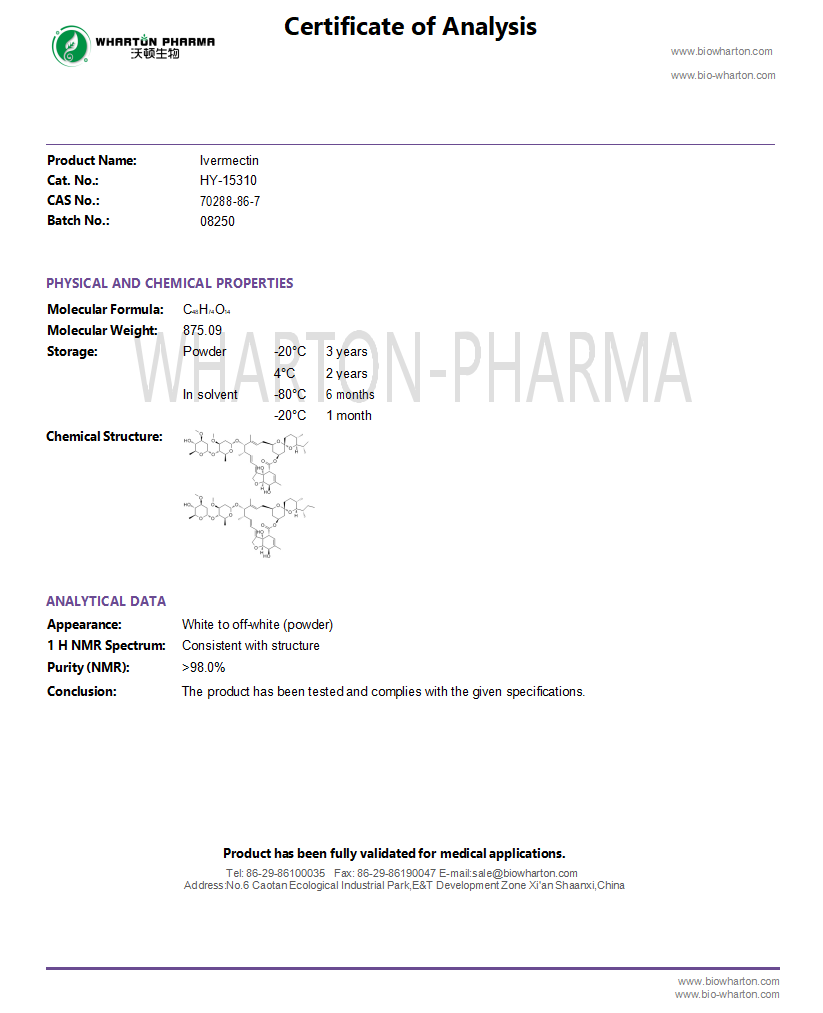
| Description | Ivermectin is a widely used antiparasitic agent in human and veterinary medicine. It is a positive allosteric effector of P2X4 and the α7 neuronal nicotinic acetylcholine receptor (nAChRs). | ||||||||||||||||
| In Vitro | Ivermectin (IVM) is a specific positive allosteric effector of heterologously expressed P2X4 and possibly of heteromeric P2X4/ P2X6 channels. In the submicromolar range (EC50=250 nM) the action of IVM is rapid and reversible, resulting in increased amplitude and slowed deactivation of P2X4 channel currents evoked by ATP. IVM also markedly increases the potency of ATP and that of the normally low-potency agonist a,b-methylene-ATP in a use- and voltage-independent manner without changing the ion selectivity of P2X4 channels[1]. IVM activates glutamate-gated chloride channels in the nerves and muscles of the parasite, leading to membrane hyperpolarization and muscle paralysis. The major mode of action of IVM is most likely the disruption of ingestive activity of the parasite, resulting in starvation[2]. Preapplication of ivermectin, in the micromolar range, strongly enhances the subsequent acetylcholine-evoked current of the neuronal chick or human α7 nicotinic acetylcholine receptors reconstituted in Xenopus laevis oocytes and K-28 cells[3]. Ivermectin activates the rat recombinant α1β2γ2s GABAA receptor. Activation of the channel with 10 mM GABA results in currents rising within 1 ms to their maximal amplitudes. The EC50 value for GABA is 7.5 μM[4]. | ||||||||||||||||
| Preparing Stock Solutions |
Please refer to the solubility information to select the appropriate solvent. |
||||||||||||||||
| Molecular Weight | 875.09 | ||||||||||||||||
| Formula | C₄₈H₇₄O₁₄ | ||||||||||||||||
| CAS No. | 70288-86-7 | ||||||||||||||||
| Storage |
|
||||||||||||||||
| Shipping | Room temperature in continental US; may vary elsewhere | ||||||||||||||||
| Solvent & Solubility | 10 mM in DMSO
* “<1 mg/mL” means slightly soluble or insoluble. “≥” means soluble, but saturation unknown. |

